
Coca-Cola has a presence in 54 African countries, impacting economies at local, national, and global scales. This case study in corporate sustainability takes a closer look at the company's efforts.
Africa’s Challenge
The United Nations has set as a goal universal access to “affordable, reliable, and modern energy” sources by 2030 (United Nations, 2015). From the vantage of 2017, this will be no small feat for Africa, where roughly one third of the population lacks access to electricity and more than half rely on biomass for basic energy needs (UNEP, 2017).
The United Nations has similarly set as its goal universal access to “safe and affordable drinking water” by 2030, one of several targets aimed at water and sanitation (United Nations, 2015). Again, this is a steep goal for Africa, where roughly half of the estimated 663 million people worldwide without access to clean water live (WaterAid Global, 2017; JNP, et. al., 2017).
Likewise, the United Nation’s 2030 development targets include the desire to “substantially reduce waste generation through prevention, reduction, recycling and reuse” (United Nations, 2015). Proliferation—and failure to dispose of—waste adversely affects health while polluting the natural environment, problems that abound in Africa. Together, questions around water, waste, and energy challenge stakeholders on the African continent; but they also present opportunities for innovation. This digest examines two case studies of such innovation through the lens of what is arguably the world’s most recognizable brand: Coca-Cola.
Coca-Cola in Africa
Coca-Cola has been in Africa since 1928, arriving first in South Africa forty-two years after the beverage was invented in Atlanta, Georgia. Through its franchise bottler model, the “secret formula” from Atlanta was exported to Africa, where it was bottled by independent franchisees who were mandated to meet standards set by the American-based corporation.
Today, Coca-Cola is in all 54 countries in Africa, where it employs more than 70,000 people in 140 bottling and canning plants, 900,000 retail outlets, and at least 3,200 micro-distribution centers (Coca-Cola Africa Foundation, 2014). This makes Coca-Cola one of, if not the, single largest private employer on the continent. Taking into consideration its positive multiplier effect—meaning the informal number of people who are supported as a result of each formal employment opportunity—the company’s reach is even bigger (Moore School of Business, 2005; PwC, 2012; PwC, 2013).
Anyone who has traveled or lived somewhere on the continent knows that it is virtually impossible to journey far enough off the beaten path to find oneself beyond the reach of Coca-Cola. Somehow, in every nook and cranny of the vast continent, you can still find a Coca-Cola product, and often a cold one. This uncanny ubiquity, striking for its contrast to the lack of basic amenities like power and clean water (that you might find there) lends insight into the singularity of this product.
Beyond having a popular product, Coca-Cola’s power rests in its vast distribution model. A bottle of Coca-Cola can—and does—travel from bottling plant to distribution center to small-scale outlet to hawker by the side of the road. That bottle travels by truck, tricycle, tuk-tuk, hand-held cart, and even dugout canoe. The strength of the Coca-Cola system is twofold: 1) along the way, each person engaged in the process makes a small profit, and 2) because of its franchise bottlers, Coca-Cola is considered to be local. And, so it is that in Africa, Coca-Cola is both a global and local commodity.
Coca-Cola’s Commitment to Sustainability
More than just an American corporation that operates overseas, Coca-Cola aims to stay attentive to immediate realities in order to protect its license to operate, mostly through collaboration with its bottlers. Creating marketing campaigns around local holidays, producing local language radio advertisements, and funding local initiatives, all under the umbrella of local bottlers, keeps the outward face of this multinational company recognizably local.
Like other companies in Africa, Coca-Cola began to pay attention to questions around sustainability at the turn of the century, particularly since its core business rests on the availability of water and energy, which were increasingly under threat. But, because Coca-Cola is a multinational company, it is also beholden to global sustainability standards.
The company’s 2020 sustainability goals, established around 2007, are aligned with global best practices, even when these exceed regulations set locally. When it comes to water, Coca-Cola’s primary ingredient, the company pledged to reduce inefficiency, promote healthy freshwater, and replenish the water it uses globally (Coca-Cola Water Report, 2017).
In 2015, the company announced that it had achieved what it calls “water neutrality,” that is, it “safely return[ed] to communities and nature an amount of water equal to what [it] uses in [its] finished beverages” on a global scale (Coca-Cola Water Report, 2017). It did this in large part through in-plant innovations and waste treatment facilities that ensure the water it puts back into the environment is clean. Since 2004, the company has also reduced the amount of water it uses to make a liter sized beverage by 27% (Sustainability Report, 2016).
At the same time, the company has partnered with more than two hundred communities across the globe to increase access to potable water, largely through its umbrella project, RAIN, and largely in Africa (RAIN, 2017). Funded by a company grant of 30 million USD, in addition to money from other donors, RAIN responds to continent-wide water crises in multiple ways (Walsh and Dowding, 2012).
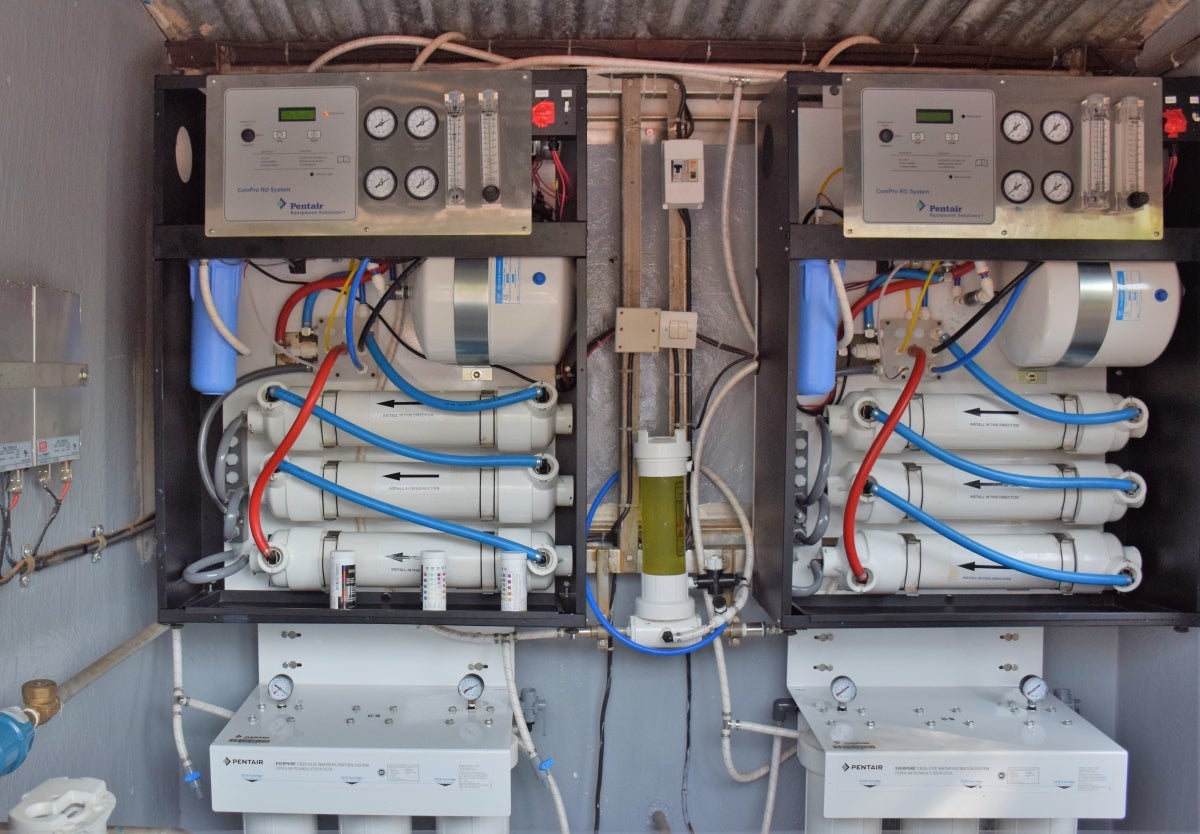

Under RAIN, projects range from extending access to municipal water that, while safe, does not reach enough people, to filtering available, non-potable water, to providing access to clean water where there was none before. There are dozens of technologies employed in these projects, each dependent on immediate realities.
When it comes to energy and climate, Coca-Cola’s corporate goals also align with global benchmarks: In 2013, it pledged to reduce CO2 emissions by 25% throughout its value chain by 2020. Numbers released recently show that emissions have been reduced by 14% since 2010 (Sustainability Report, 2016). Reaching these goals entails enhancing energy management devices within its plants and installing more coolers free of hydrofluorocarbon across the globe (as old ones are replaced).
Presently, there are 81 green initiatives underway across the system, with an additional 50 in the pipeline. Most of these are small-scale solar initiatives that provide supplemental energy to plants. Although wind has the potential to generate far more energy, the capital expenditure needed for wind farms is much higher (Sustainability Report, 2016).
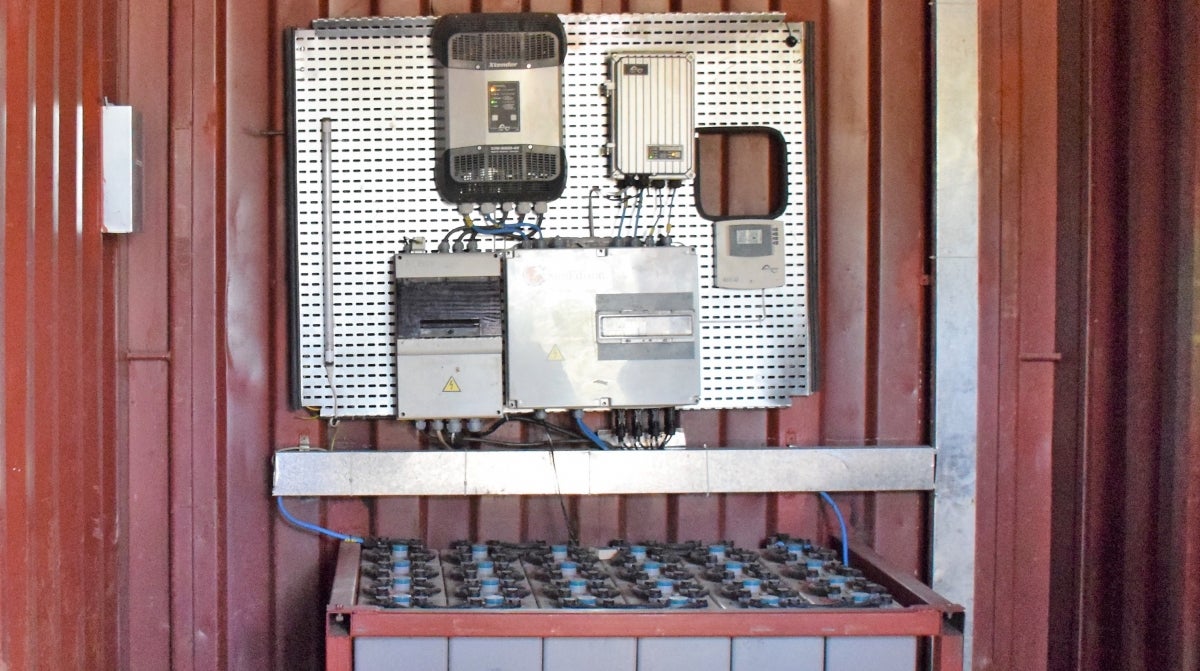
Turning to packaging, the other component that plays into sustainability, Coca-Cola has pledged to reach a 75% recovery rate in developed markets. This means continuing to promote recycling efforts. At the same time, the company is focused on expanding the production of what it calls “plant bottles” (recyclable Polyethylene Terephthalate, or PET, made partially from plants), which saves oil costs. And, since 2008, the company has steadily reduced the weight of its packages, helping lower fuel costs for transport. The most recent numbers note that 60% of all introduced packaging has been either recycled, recovered, or refilled (Sustainability Report, 2016).
Yet, Coca-Cola’s sustainability success stories—of which there are many—sometimes obscure regional differences. The reality is that sustainability efforts lag in Africa. According to internal Coca-Cola tracking, total waste production, energy use, and CO2 emissions across the company’s three African business units have all trended downward since 2010. However, the numbers remain above best-practice levels within the global system.
Unstable regulatory environments, the predominance of small—and therefore less efficient—plants, and under-developed provider sectors all hamper achievement in Africa. In terms of package recovery, while most levels in Africa were reportedly high in 2015 (the most recent data), they still failed to reach levels achieved in places like Japan, Western Europe, and Canada. It should be noted, however, that package recovery levels exceeded the levels reported in the United States (Sustainability Report, 2016). Shortcomings, in other words, are not unique to Africa.
These numbers suggest there is room for improvement in Africa when it comes to water, waste, and energy. It is that space for possibility on which the company is now focused. At present, some Coca-Cola bottlers are starting to set up small photovoltaic initiatives at individual plants. Others are further along. Coca-Cola Hellenic Bottling Company, the lead bottler in Nigeria (which also operates in Europe), has several large co-generation schemes that provide its plants with some independence from an unreliable and limited grid, while reducing carbon output.
Other plants across Africa are considering similar schemes. These are all nascent, often stymied by an immature provider sector, regulatory environments inhospitable to such initiatives (compared to, say, European subsidies), and, in some cases, lack of human resources to do the significant legal, procedural, and ultimately technical legwork needed. But, they are in the pipeline, particularly because energy access is increasingly seen as a threat to operations on the ground.
At the same time, Coca-Cola is focused on packaging recovery. While cultures and systems of waste collection are not firmly in place in Africa, entire upcycling and repurposing industries arise from refuse, sometimes in ways that confound bottlers who need their glass bottles returned, for instance, and often in ways that are degrading and dangerous. Though in most of Africa returnable glass bottles (RGB) remain king, PET (plastic) is making inroads, often adding to waste. In countries where PET is captured, like Rwanda, the plastic bottles are shipped to China for recycling, which often means breaking it down for use as fiber or pellets. South Africa provides an alternate model, described below.
PETCO: Plastic Recycling
Coca-Cola South Africa played a key role in the formation of PETCO, the PET Recycling Company NPC. Established in 2004 as a voluntary consortium of members of the South African PET industry, PETCO “self-regulates” recycling of plastic bottles. In the decade since its creation, PETCO has driven recycling efforts in South Africa to over 50%, reduced landfill storage, and helped lower CO2 levels.
This means there has been an 822% increase in recycling tonnage in South Africa since its creation (Wells). As part of its model, PETCO contracts with the only bottle-to-bottle recycling plant on the continent, where PET is repurposed into food-grade PET, versus PET for use as fiber, and living out PETCO’s motto that “plastic bottles are not trash.”
To achieve these results, PETCO has incubated what it calls “income opportunities” for trash collectors, often called trolleypreneurs, who sprung up on their own to meet a need they saw. In 2016, Dr. Casper Durandt, who serves as both chairman of PETCO and technical manager for Coca-Cola South Africa, estimated the number of people doing this type of work at around 40,000, with about 18% of them scavenging on landfills (Durandt).
Coke and PETCO do not support landfill picking, which is dangerous and unhygienic, though the practice persists. Rather, they support those pickers who process rubbish at the point of consumption. Named for the trolleys they push around the city and their entrepreneurial spirt, these trolleypreneurs earn cash while serving environmental and practical ends.
This work is difficult and degrading, as the folks at Coca-Cola and PETCO are quick to point out; the average trolleypreneur was making about 200-250R, or $20 USD, a day at the time I spoke to Durandt (Durandt). But, in the absence of available employment as well as other viable methods of trash collecting, Coke and PETCO are nevertheless trying to incubate these collectors. They provide reflective vests, safer trolleys, and plastic collection bags, while paying them on debit cards and helping train them in basic business skills.
While PETCO has established a robust model that has the capacity to “close the loop” on packaging, PET use remains secondary to RGB. There is a fierce debate about what is better from an environmental point of view: PET (that can be recycled and created with plant matter) or glass. While glass theoretically retains endless recycling potential, its use requires sanitizing—that uses water; glass is also heavier than plastic.
There is no single answer to this question, since much depends on the distance the bottle travels, whether or not it is reused—and how many times—and other variables. What is clear is that with the rise of GDPs across Africa, more and more consumers will demand one-way (plastic) packaging, increasing the need for sustainable PET use.
EKOCENTER: Energy, Water, and More
Just as PETCO provides an exportable model for Coca-Cola-driven sustainability, Coke’s EKOCENTER—a kiosk/energy hub—does likewise. A two-hour drive from Kigali, the capital of the small, landlocked central African nation of Rwanda, is the flagship center in Ruhunda. There, the 25,000 residents of this rural area can now access things they once lacked: basic consumer goods, purified water, 3G internet access, a regulation soccer field, and a medical center backed by a solar powered generator.
Unlike other Coca-Cola initiatives in Africa, many of which are anonymous, the EKOCENTER is Coca-Cola branded. Inside, young women run the shop, which sells Coke, but also milk and maize, pens and paper, solar panels and toothpaste, and more, alongside a much-used cell-phone charging station.
The Ruhunda location is the model of all that an EKOCENTER can be. Beside the kiosk is a seating area with room for sixty people, space for small-scale food vendors, pit latrines with sanitation stations, and a telecommunications tower. Adjacent is a free-standing water pump that provides both “raw,” municipal water and water that has been purified by reverse osmosis to meet WHO standards. Behind that is a medical clinic frequented by 100 to 200 people daily.

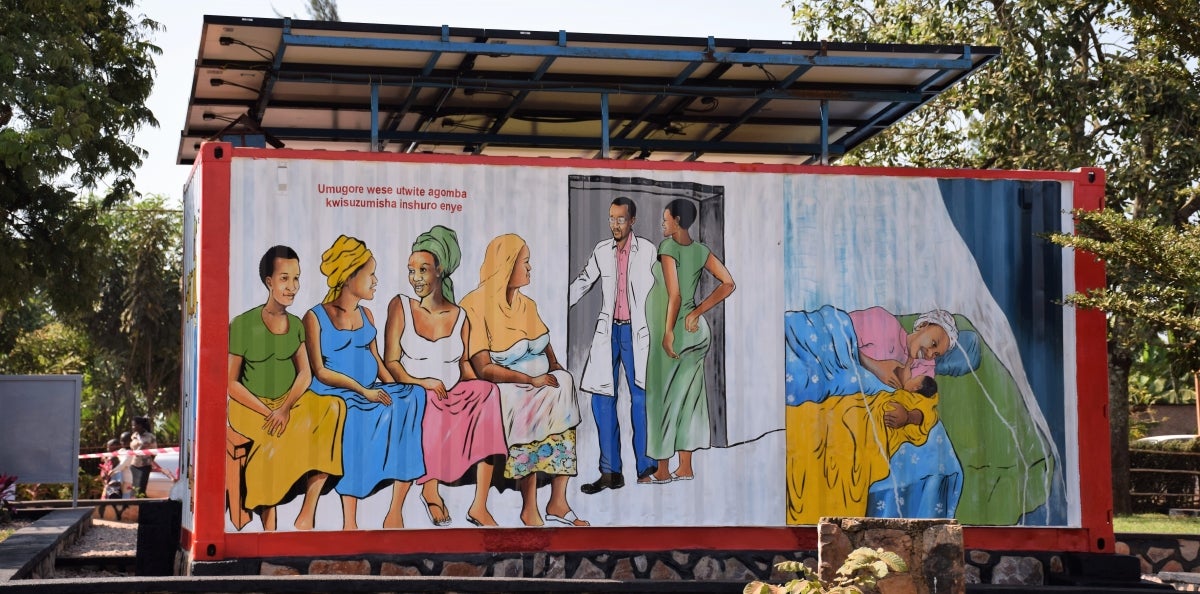
The water pump, kiosk, and telecom tower are powered by a solar system with storage capacity of 13 kilowatts of power. The water pump requires between ½ and 1 kilowatt of power daily, some of which is held as back up for the clinic and some of which is sold back to small-scale entrepreneurs. The fees received help maintain the device, which is monitored remotely, but fixed locally by trained mechanics. At the time I visited, the kiosk was generating 4,000 Euros in monthly revenue with a gross profit of 800 Euros monthly.
The EKOCENTER demonstrates what Coca-Cola often refers to as its immense convening power. It is an example of what Coca-Cola calls its tri-sector partnership between business, civil society, and government. As of June 2016, Coca-Cola had placed more than 100 EKOCENTERS on the continent, with 35 in Rwanda alone.
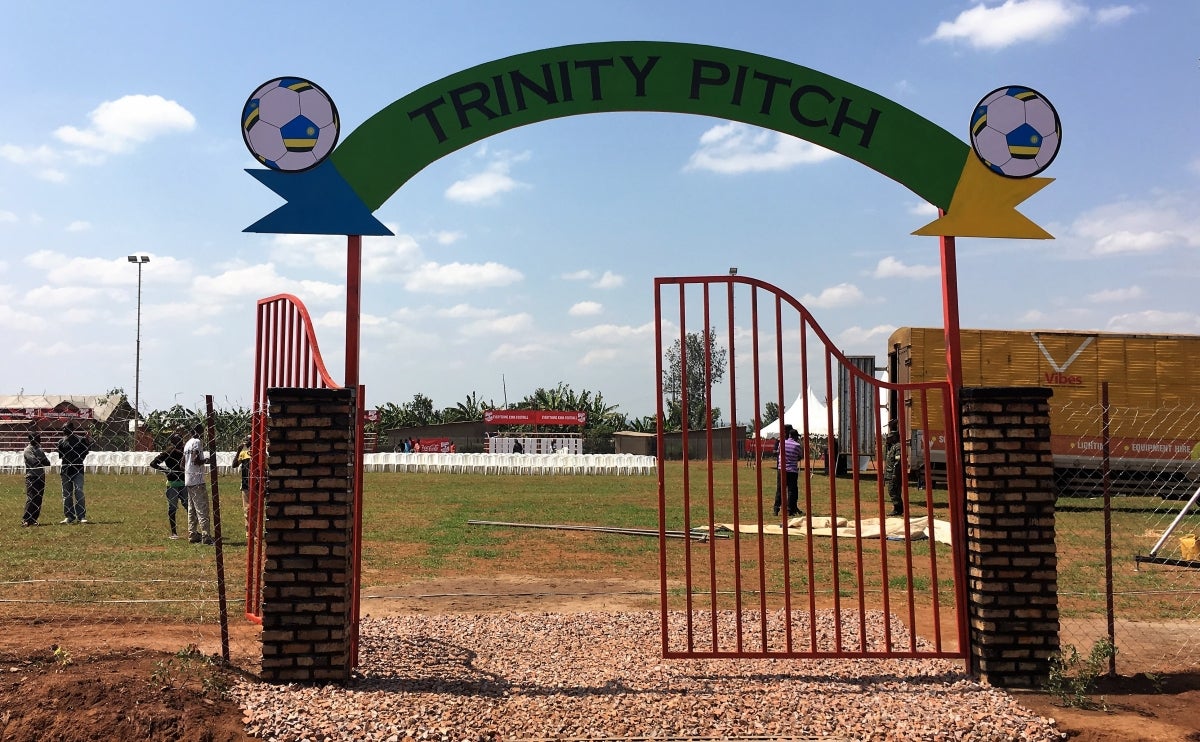
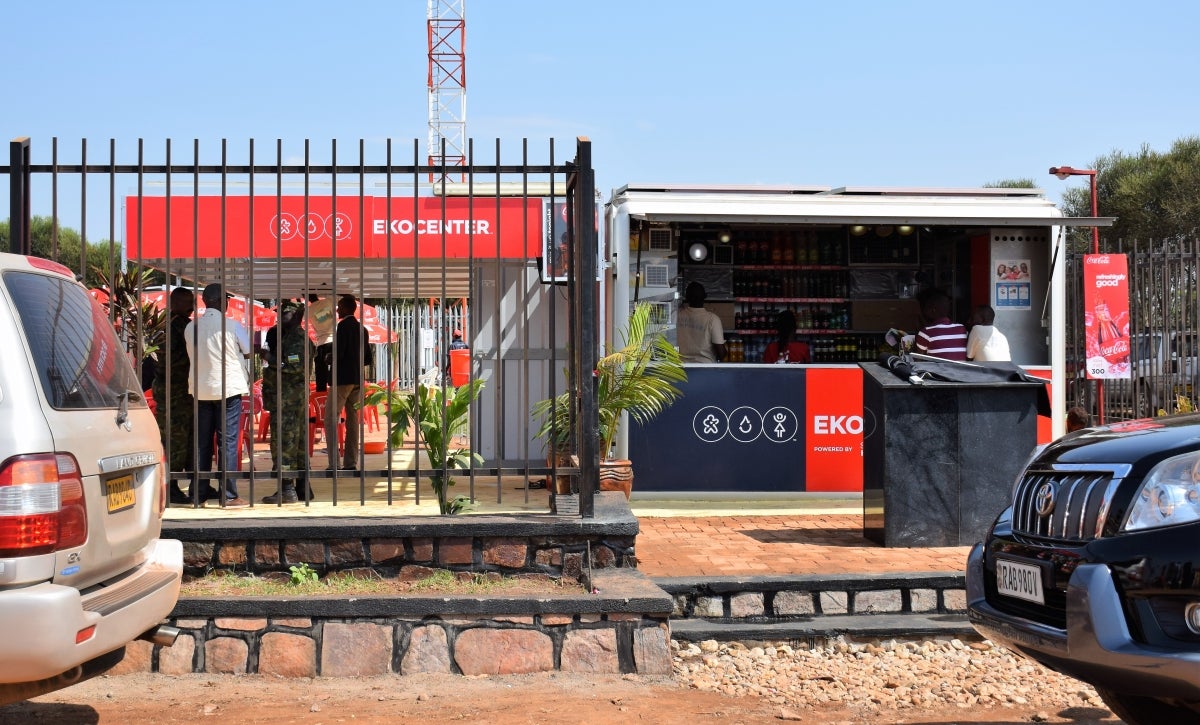
Lessons Learned
When it comes to water, waste, and energy, no one-size solution can work across a continent as vast as Africa. Still, there are several lessons that emerge from these two case studies:
Job Creation. Any solution aimed at tackling water, waste, and energy challenges should include a job creation component. Multiple analysts across these domains have made this point: employment is central to any enduring development model (Brew-Hammond, 2297). And here, of course, is where a company like Coca-Cola, with its vast employment potential, comes in.
Serving Multiple Bottom Lines. In the Coca-Cola system every single person who touches the supply chain makes a profit, however small. So too could those who do work aimed at tackling the world’s biggest problems. Coca-Cola understands that small profits made along the way, if properly harnessed, become the seeds of future profits and, in the best-case scenario, provide an escape from poverty. Coca-Cola’s EKOCENTERS (whose female employees are often participants in the company’s larger initiative to empower 5 million women by 2020) and PETCO, that incubates workers, are prime examples of the type of scheme that pairs income generation with sustainability work.
Corporate Involvement. These lessons also call for a willingness to see multinational corporations as potential partner agents for change. At the same time, and differently, the lessons make clear that in order for Coca-Cola, or any corporation, to rise to these challenges, it must work hard to determine that its activities are truly supporting sustainability, rather than being green window dressing. These lessons also call for a continued transfer of knowledge across the Coca-Cola (and other) corporate systems and, if possible, an extension of providers (whether around energy, water, or recycling) across geographies to expand possibilities.
Balance. Water, waste, and energy in Africa, when examined via the lens of Coca-Cola, call to mind the balance that should always be at the front of any sustainability discussion. Where we might lower carbon production with reusable glass bottles, for example, we might simultaneously expend more water. Where we might get rid of manual bottle cleaning, we might lose employment opportunities. Where we hinge our hopes at electrifying the continent around a corporation, we may undermine governments. Where we rely on a beverage company’s initiatives, we may extend the consumption of sugary drinks to those whose diets are already compromised.
The matrix around these questions is complex; the answers far from easy. The implications for the energy, sustainability, public health, and policy certainly require more exploration.
The research featured here was supported by grant funding from the Kleinman Center. The author’s research, opinions, and insights do not represent the voice of the Kleinman Center. The author wishes to acknowledge the helpful comments of Dr. James R. Hines.
Sara Byala
Senior Lecturer, Critical Writing and HistorySarah Byala is a senior lecturer in critical writing and history at the University of Pennsylvania.
Adebayo Bello, Ibrahim, Muhamad Norshafiq bin Ismail, and Nassereldeen A Kabbashi. “Solid Waste Management in Africa: A Review.” International Journal of Waste Resources. 6:2. 2016, page 2. Accessed July 17, 2017.
http://dx.doi.org/10.4172/2252-5211.1000216
African Development Bank Group. “The New Deal on Energy for Africa: A Transformative Partnership to Light up Power and Africa by 2025. Update on Implementation.” April, 2017. Accessed July 12, 2017.
https://www.afdb.org/fileadmin/uploads/afdb/Documents/Generic-Documents/Brochure_New_Deal_2_red.pdf
Bello, IA, Ismail MNB, and Kabbashi NA. “Solid Waste Management in Africa: A Review.” International Journal Waste Resources 6: 2016. doi: 10.4172/2252-5211.1000216
Brew-Hammond, Abeeku. “Energy access in Africa: Challenges ahead.” Energy Policy. 38 (2010) 2291-2301.
Christensen, C.M. The Innovator’s Dilemma: When new Technologies Cause Great Firms to Fail. Cambridge: Harvard Business School Press, 1997.
Coca-Cola. “Our 2020 Environmental Goals.” Infographic.
Coca-Cola. Sustainability. Accessed August 17, 2017.
http://www.coca-cola.co.za/sustainability_climate_protection.html
Coca-Cola. “Sustainability Report, 2016.” Released/Accessed August 23, 2017.
http://www.coca-colacompany.com/2016-sustainability-report
Coca-Cola. “Water Use Ratio,” “Total Waste Ratio,” “BU Recovery and refill in unit cases,” “Energy Use Ratio,” “CO2 Emissions,” and “Total Energy Use.” Internal data from Coca-Cola. Accessed July, 2017, Atlanta.
Coca-Cola Africa Foundation, Infographic, 2014.
Coca-Cola FEMSA. “Informe De Sostenibilidad Coca-Cola Femsa.” Accessed August 17, 2017.
https://img.coca-colafemsa.com/assets/files/es/Sostenibilidad/Coca-Cola-FEMSA-Informe-de-Sostenibilidad-2016.pdf
Coca-Cola Journey. “RAIN: the Replenish Africa Initiative.” Accessed July 31, 2017.
http://www.coca-colacompany.com/stories/rain-the-replenish-africa-initiative
Coca-Cola Journey. “Sustainability Update: Energy Efficiency and Climate Protection.” Accessed July 10, 2017.
http://www.coca-colacompany.com/our-company/sustainability-update-energy-efficiency-and-climate-protection
Coca-Cola Journey. “Water Stewardship and Replenish Report: Improving our Water Efficiency.” Accessed July 31, 2017.
http://www.coca-colacompany.com/stories/setting-a-new-goal-for-water-efficiency
Coca-Cola Journey. “Water Stewardship and Replenish Report: Collaborating to Replenish the Water we use.” Accessed July 31, 2017.
http://www.coca-colacompany.com/stories/collaborating-to-replenish-the-water-we-use
“Coca-Cola European Partners closing in on 100% renewables target.” July 3, 2017. Edie.net. Accessed July 31, 2017.
https://www.edie.net/news/10/Coca-Cola-European-Partners-closing-in-on-100–renewables-target/
Gates, Melinda. “What Nonprofits can Learn from Coca-Cola.” TED talk. September, 2010 at TEDxChange. Accessed July 17, 2017.
https://www.ted.com/talks/melinda_french_gates_what_nonprofits_can_learn_from_coca_cola/transcript
Hoornweg, Daniel, Bhada-Tata, Perinaz. “What a Waste: A Global Review of Solid Waste Management.” Urban development Series; Knowledge papers. No. 15. 2012. World Bank, Washington, DC. Accessed July 17, 2017. https://openknowledge.worldbank.org/handle/10986/17388 License: CC BY 3.0 IGO.”
Interview with Casper Durandt, Coca-Cola offices, Parktown Wednesday, July 6, 2016.
Interview with Alistair Schorn at PETCO, May 2017.
JMP, WHO, UNICEF, “Progress on Drinking Water, Sanitation and Hygiene.” 2017. Accessed July 17, 2017.
https://washdata.org/
Karekezi, Stephen, Waeni Kithyoma. “Renewable energy strategies for rural Africa: is a PV-led renewable energy strategy the right approach for providing modern energy to the rural poor of sub-Saharan Africa?” Energy Policy. 30 (2002) 1071-1086.
Mahama, Amadu. “2012 International Year for Sustainable Energy for all: African Frontrunnership in Rural Electrification.” Energy Policy. 48 (2012) 76-82.
Maruf Hasan. “Sustainable Supply Chain Management Practices and Operational Performance.” American Journal of Industrial and Business Management. 2013, 3, 42-48.
PETCO. “Plastic Bottles are not Trash.” Accessed July 31, 2017.
http://petco.co.za/
“PM Praises Coca-Cola’s Solar Pant.” The Sun Online. July 4, 2017. Accessed July 31, 2017.
http://fijisun.com.fj/2017/07/04/pm-praises-coca-colas-solar-plant/
PwC. “The Coca-Cola System’s Contribution to Development Goals in Tanzania.” June, 2013.
PwC. “The Coca-Cola System’s Contribution to National Development Goals in South Africa.” November, 2012.
Sebitosi, A.B. and P. Pillay. “Grappling with a half-hearted policy: The case of renewable energy and the environment in South Africa.” Energy Policy. 36 (2008) 2513- 2516.
The Moore School of Business. “The Economic Impact of the Coca-Cola System on South Africa.” University of South Carolina. March 2005.
UNEP Press Release, “New Atlas shows energy potential of Africa and opportunities for investment to meet Africa’s energy needs,” May 4, 2017. Accessed July 17, 2017.
http://www.unep.org/newscentre/new-atlas-shows-energy-potential-africa-and-opportunities-investment-meet-africa%E2%80%99s-energy-needs
“United Nations Sustainable Development Goals: Goal 6.” Adopted 2015. Accessed July 31, 2017.
http://www.un.org/sustainabledevelopment/water-and-sanitation/
“United Nations Sustainable Development Goals: Goal 7.” Adopted 2015. Accessed July 31, 2017.
http://www.un.org/sustainabledevelopment/energy/
“United Nations Sustainable Development Goals: Goal 12.” Adopted 2015. Accessed July 31, 2017.
http://www.un.org/sustainabledevelopment/sustainable-consumption-production/
Walsh, H. and Dowding, T.J. “Sustainability and the Coca-Cola company: the global water crisis and Coca-Cola’s business case for water stewardship.” International Journal of Business Insights & Transformation. Vol. 4. Special Issue. 2012. 106-118.
WaterAid Global. “Statistics.” Accessed July 10, 2017.
http://www.wateraid.org/what-we-do/the-crisis/statistics#crisis
Witt Wells, “South Africa’s PET Plastic Recycling Rates Close in on European Standards,” Apr 11, 2017.
www.coca-colacompany.com/coca-cola-unbottled/south-africa-recycled-2-billion-pet-bottles-in-2017

